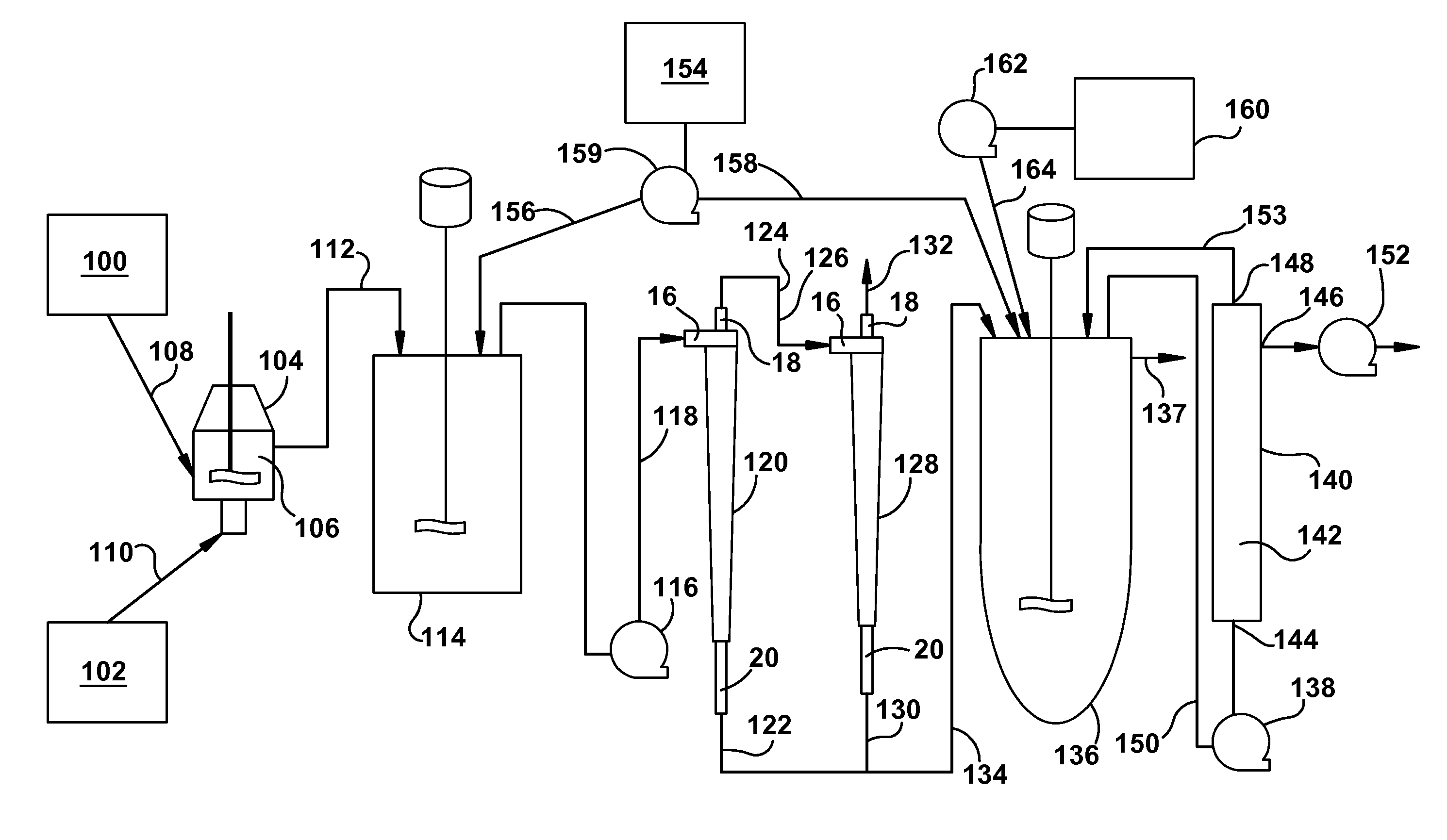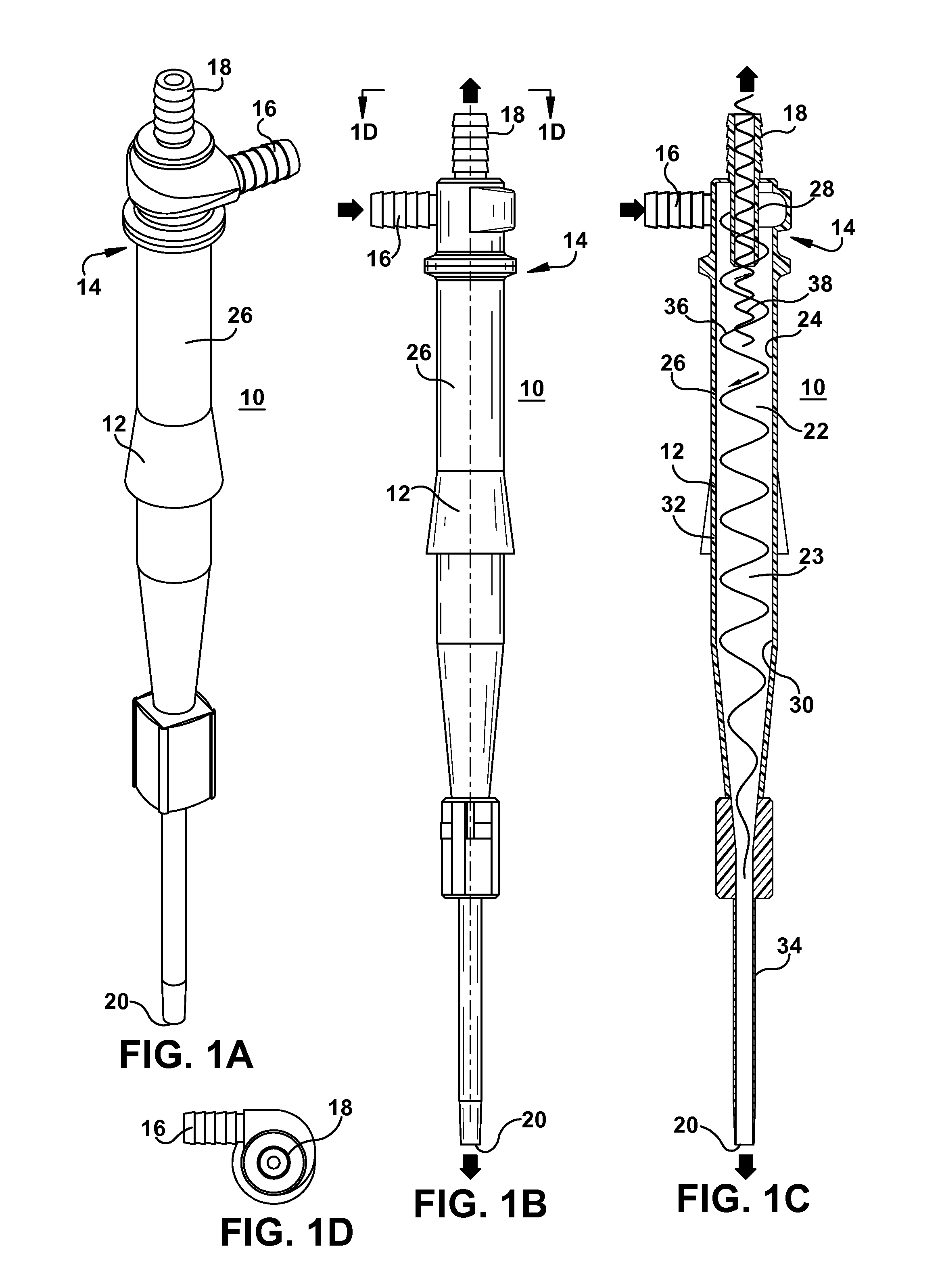Manufacture of microspheres using a hydrocyclone
a hydrocyclone and microsphere technology, applied in the direction of antibacterial agents, positive displacement liquid engines, borehole/well accessories, etc., can solve the problems of slow release rate, initial burst, and compromise the quality of products, and achieve the effect of processing large volumes and eliminating deficiencies with existing equipment at a faster ra
- Summary
- Abstract
- Description
- Claims
- Application Information
AI Technical Summary
Benefits of technology
Problems solved by technology
Method used
Image
Examples
example 1
Processing Microsphere Suspension Using a Hydrocyclone: Effect of Inlet Flow Rate, Apex ID and Particle Concentration on Concentration Coefficient and Particle Size
[0066]A microsphere suspension was prepared from a polylactide-co-glycolide solution in dichloromethane by an oil-in-water process using an in-line Silverson mixer as per U.S. Pat. No. 5,945,126. Polyvinyl alcohol solution (0.35%) was used as the continuous phase. The Silverson mixing speed was 7000 rpm. Microparticles were washed to remove residual solvents and the particles were finally suspended in water. The concentration of microspheres in the suspension was 49 mg / g. Subsequently, suspensions having lower concentrations as shown in Table 1 were also prepared by diluting it further in water. The suspension was maintained in a 20 L Applikon vessel (intermediate vessel, IMV) during the study and continuously stirred to maintain homogeneity. Suspension samples from the IMV were taken for concentration and particle size a...
example 2
[0070]The effect of the apex ID of the hydrocyclone on concentration coefficient and particle size of microspheres was evaluated using hydrocyclone model GMAX1U-3125 (from Krebs) using three different apex IDs A (0.118), B (0.157), and C (0.197) from Krebs Studies were performed using the microsphere suspension having 15 mg / g particle concentration at two different flow rates, 8.7 L / min and 12.6 L / min. When the hydrocyclone apex was changed from A to C, the concentration coefficient increased from 4.0 to 5.0 at 8.7 L / min flow rate and from 4.9 to 6.7 at 12.6 L / min flow rate. Additionally, apex C removed a substantial amount of small particles. In the bulk suspension (feed) 10% of the particles were under 2.76 micron. Upon processing through the hydrocyclone the underflow showed 10% of the particles were under 13 microns in particle size. By selecting appropriate apex and inlet flow rate smaller particles could be eliminated to various extents from the product.
[0071]
TABLE 2Effect of ...
example 3
Doxycycline Microspheres Processed by Hollow Fiber Filter and Hydrocyclone
[0072]Doxycycline is an antibiotic that requires sustained drug level in the blood for efficacy. Doxycycline microspheres for two week release were prepared by processing the microspheres using a hollow fiber filter (HFF) process. Using the HFF process, the suspension produced by the in-line Silverson was approximately 50 L and took approximately 50 minutes to eliminate 30 L water. Using the hydrocyclone it took only 4 minutes to eliminate 30 L water. Also, the microspheres processed through the hollow fiber filter contained smaller particles. For this product, the drug release kinetics performed by in-vitro and in-vivo (rat model) showed an initial burst. Microspheres processed through the hydrocyclone were found to be substantially free from small particles, which eliminated low drug containing small particles. The resultant microspheres showed considerably lower initial burst and higher drug load. The follo...
PUM
 Login to View More
Login to View More Abstract
Description
Claims
Application Information
 Login to View More
Login to View More - R&D
- Intellectual Property
- Life Sciences
- Materials
- Tech Scout
- Unparalleled Data Quality
- Higher Quality Content
- 60% Fewer Hallucinations
Browse by: Latest US Patents, China's latest patents, Technical Efficacy Thesaurus, Application Domain, Technology Topic, Popular Technical Reports.
© 2025 PatSnap. All rights reserved.Legal|Privacy policy|Modern Slavery Act Transparency Statement|Sitemap|About US| Contact US: help@patsnap.com



